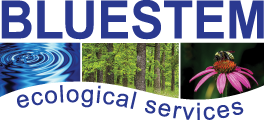The birds and butterflies that visit your commercial landscape can be as much of an attraction as the plants growing on the property. Watching a colorful butterfly land on an open flower petal and flutter into the sky can feel magical—like you have a backstage pass to nature’s “show.” Birds of all kinds will visit your Illinois landscape, making your great outdoors a dynamic, interesting experience for visitors, employees or residents. And while bees might seem like a bother, they play an important role in the pollination process.
If you plant certain native trees and flowers—the birds and butterflies will come. And when they do, not only will you enjoy watching their activity, they’ll improve your landscape from an ecological standpoint. Aside from aiding in pollination, they can even provide natural pest control. As for birds, they also eat a range of insects you don’t want in the landscape, and certain species like finches and sparrows consume weed seeds. Birds also play a role in pollination, too. The presence of all these creatures is a sign of a healthy outdoor environment.
Want to attract birds, bees and butterflies? Here is a short list of native plants that will lure in these beneficial, fascinating creatures.
#1 Butterfly Weed (Asclepias tuberosa)
Attracts: butterflies and bees
Appearance: This bushy perennial blooms with flat-top clusters of bright, orange flowers. The vibrant, fiery color adds visual interest in the landscape and attracts winged beauties.
Growth habits: Butterfly weed, also called orange milkweed (even though it does not produce milky sap), can grow up to 1½ to 2 feet and it loves full sun. Butterfly weed does well in dry and moist soil, making it a relatively versatile ornamental in the landscape.
#2 Blazing Star (Liatris spp. and their cultivars)
Attracts: butterflies
Appearance: Blazing star is a perennial, flowering herb with long, tapering, curled leaves that range from 3 inches to 1 foot. Leaves are longest at the bottom and get shorter as they progress up the stem. Flowers bloom in pinkish-purple colors. The deer-resistant, drought-tolerant plant is versatile for the landscape—and blooms in spring and fall.
Growth habits: This wildflower grows up to 8 feet tall, and spreads about 2 feet wide. It thrives in the Midwest and loves well-irrigated soil.
#3 New Jersey Tea (Ceanothus Americana)
Attracts: bees and butterflies
Appearance: Also known as redroot, this deciduous shrub has leaves that look grayish and produces small, white clusters of flowers on branch tips. New Jersey tea gets its name because the dried leaves were used to make tea that was popular during the Revolutionary War.
Growth habits: This woody shrub has branches that spread, yet the plant grows to be only about 3 feet tall. That makes it a compact choice for the landscape. It is drought and cold tolerant, and grows best in partial or full shade.
#4 Coneflower (Echinacea spp. and their cultivars)
Attracts: birds, bees and butterflies
Appearance: This colorful “happy” flower is a member of the daisy family, and they are available in a range of colors. Purple coneflower is known as a butterfly magnet. The hardy flower is easy to maintain, attractive in native and traditional landscapes, and reels in beneficial butterflies that love the sweet nectar found in the coneflower’s fuzzy brown-orange center.
Growth habits: Coneflowers love sun, and they establish in clumps, providing pretty pops of color on your Illinois commercial property. They grow 2 to 3 feet tall, spread about 2 feet, and thrive in well-drained soil with moderate to regular watering.
#5 Bee Balm (Monarda spp. and their cultivars)
Attracts: Hummingbirds, bees and butterflies
Appearance: The vibrant, firecracker blooms in colors in pink or purple energize a native or traditional landscape and will attract hummingbirds, along with other bird species. Butterflies and bees (of course) love the sweet nectar that Bee Balm makes. So, with Bee Balm, you get visual excitement and a triple-benefit of birds, bees and butterflies. (We say, that’s a win.)
Growth habits: This easy-grow variety multiples quickly and tolerates wet soil. can expect it to reach 2 to 4 feet in height, depending on the variety.
Establish A Healthy Natural Habitat
Your landscape provides an opportunity to create a healthy ecosystem, thriving with birds, bees and butterflies that are not only interesting to watch but beneficial for the environment. Let’s talk more about how plant choice and other landscaping features can improve your Illinois property’s population of beneficial creatures.
Call Bluestem any time at 815.568.2907.

3 Comments
Although they will eat some of our plant, knowing that we will be enjoying the beautiful butterflies is worth the sacrifice.
The more time, attention, effort, and thought you apply to an idea the more likely it is that something will come of it. If we build a baseball diamond and never go there again there is less chance of people coming.
And the butterfly folks assure us, that if we plant milkweed, the monarchs will come.
RECENT POSTS
CATEGORIES